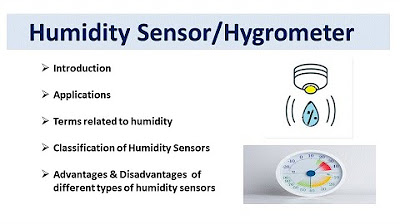Sensors in Food Technology
Summary
TLDRThis video discusses the critical role of sensors in the food and beverage industry, highlighting their ability to monitor temperature, moisture, pressure, and quality throughout the production process. Sensors enhance efficiency, optimize resource utilization, and ensure compliance with food safety regulations. Various types of sensors, including temperature, humidity, and proximity sensors, are employed to detect contaminants and ensure product integrity. Modern innovations like electronic noses and tongues mimic human sensory systems, improving taste and safety assessments. Overall, these technologies are pivotal for sustainable and high-quality food production.
Takeaways
- 😀 Sensors are essential devices that detect various environmental triggers, enhancing food safety and production efficiency.
- 😀 They enable precision monitoring of critical factors like temperature, moisture, and pressure throughout food processing.
- 😀 By optimizing resource utilization, sensors help reduce waste and energy consumption in food production.
- 😀 Sensors play a key role in maintaining consistent product quality by detecting variations and preventing defects.
- 😀 Compliance with food safety standards is facilitated by sensors, ensuring consumer protection and regulatory adherence.
- 😀 Real-time monitoring by sensors aids in identifying contaminants and pathogens, improving food safety measures.
- 😀 Common types of sensors in the industry include temperature, moisture, pressure, and pH sensors.
- 😀 Advanced sensors like flow, gas, optical, and metal detection sensors contribute to quality control and safety.
- 😀 Modern technologies like the electronic nose (E-nose) and electronic tongue (E-tongue) enhance flavor and odor analysis.
- 😀 Time-temperature sensors track conditions during shipping, ensuring product integrity and compliance with safety standards.
Q & A
What is the primary role of sensors in the food and beverage industry?
-Sensors play a crucial role in detecting and responding to various physical triggers, ensuring safe, efficient, and sustainable food production while maintaining high product quality.
What types of basic sensors are commonly used in food processing?
-Common basic sensors include temperature sensors, moisture sensors, pressure sensors, and pH sensors, which monitor critical parameters during food production.
How do temperature sensors contribute to food safety?
-Temperature sensors monitor and control temperatures during processes like cooking, baking, and refrigeration, ensuring that food is kept within safe temperature ranges to prevent spoilage.
What are the benefits of using moisture sensors in food processing?
-Moisture sensors help measure the moisture content in food products, which is essential for quality control and preventing spoilage.
What function do pressure sensors serve in food packaging?
-Pressure sensors ensure the integrity of packaging seals and monitor safety in pressurized systems, preventing contamination and ensuring product safety.
What is the significance of regulatory compliance in the food industry?
-Regulatory compliance ensures that food products meet strict safety standards, protecting consumer health and adhering to industry regulations.
What modern sensor technologies are used in the food industry?
-Modern sensors include proximity sensors, electronic noses (E-noses) for odor detection, and electronic tongues (E-tongues) for taste analysis, which enhance food safety and quality assessment.
How do gas sensors help in food preservation?
-Gas sensors detect gases like oxygen and carbon dioxide in packaging and storage environments, helping to maintain optimal gas composition for preserving food quality.
What is the function of optical sensors in food processing?
-Optical sensors detect contaminants and foreign particles in food products, contributing to food safety and ensuring high product quality.
How does the time-temperature sensor enhance logistics in food delivery?
-Time-temperature sensors track temperature during shipping, providing real-time data that can be accessed remotely, ensuring that food is transported safely within required temperature ranges.
Outlines

このセクションは有料ユーザー限定です。 アクセスするには、アップグレードをお願いします。
今すぐアップグレードMindmap

このセクションは有料ユーザー限定です。 アクセスするには、アップグレードをお願いします。
今すぐアップグレードKeywords

このセクションは有料ユーザー限定です。 アクセスするには、アップグレードをお願いします。
今すぐアップグレードHighlights

このセクションは有料ユーザー限定です。 アクセスするには、アップグレードをお願いします。
今すぐアップグレードTranscripts

このセクションは有料ユーザー限定です。 アクセスするには、アップグレードをお願いします。
今すぐアップグレード関連動画をさらに表示

Humidity Sensors | Hygrometers | Humidity Parameters|Types of Humidity Sensors |Applications

Futura Profissão - Técnico em Alimentos

Robotics Sensors 2 : A Deep Dive into Robotics Sensors

Manutenção no Setor Alimentício

Food Processing Technology: Transforming the Agricultural Industry

What is a Pressure Sensor?
5.0 / 5 (0 votes)
